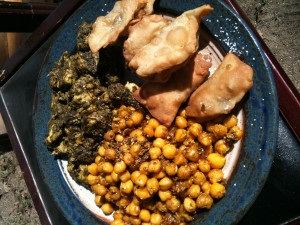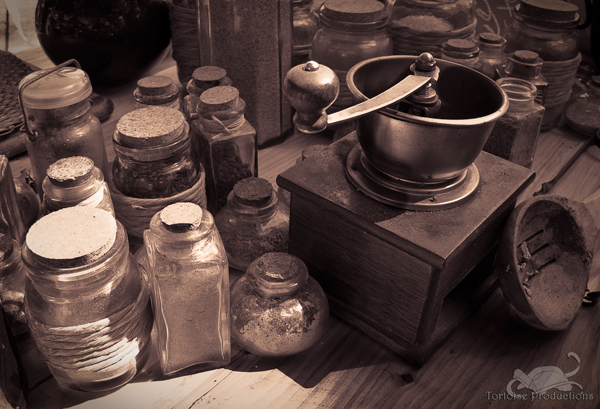This past weekend was Silk Road weekend at the Minnesota Renaissance Festival and we cooked up a storm. My assistants, Nicholas and Rissa, worked very hard over the three day weekend and we cooked and cooked. We demonstrated several recipes. I will post the second set of recipes later, once I can compile my notes further.
This past weekend, our 1:00 pm show demonstrated chicken tikka, curry chickpeas, and samosas. I hope you like them as much as we did; they made a very tasty lunch.
Chicken Tikka
Ingredients:
3/4 teaspoon cumin seeds, toasted
3/4 teaspoon coriander seeds, toasted
2 cups whole-milk yogurt
4 garlic cloves, chopped
1 (1 1/2-inch) piece fresh ginger, peeled and chopped
3 tablespoons vegetable oil plus additional for greasing pan
2 tablespoons fresh lime juice
1 1/2 teaspoons salt
3/4 teaspoon ground turmeric
1/2 teaspoon garam masala (Indian spice mixture)
1/2 teaspoon black pepper
1/4 teaspoon cayenne
5 pounds skinless boneless chicken breasts, cut into 1 1/2-inch cubes
Blend well the whole milk yogurt and spices together. Add the chicken and marinate for 8 hours. Heat up a pan with oil and fry up the chicken or use skewers and grill the chicken until done.
Curry Chickpea Stew
Ingredients:
1 tsp sea salt
1 can of chickpeas, drained and rinsed
1 medium onion, diced
1 tsp mustard seeds
1 tsp turmeric
1 tsp garam masala
2 tsp cumin, ground
2 tsp coriander, ground
2 tsp garlic, minced
2 tsp ginger, dried and cracked (preferred) ground is also acceptable
1 tsp cumin seeds
2 tablespoons of olive oil
In a pan with hot oil, add the mustard seeds and cook until they have all popped (like popcorn). Add the chickpeas and the spices. Cook until the spices have completely covered the chickpeas.
Vegetable Samosa FIlling
Ingredients:
1 Potato finely diced
1 carrot finely diced
2 cloves of crushed garlic.
1 Onion finely chopped
1 Cup of frozen peas
1 tblspn vegetable oil
2 tspn curry powder or your own spices according to taste
Salt, Pepper to taste
Dice up the potatoes, carrots, and onions. Heat up a pan with vegetable oil and the diced vegetables along with the frozen peas. Add the curry and sauté the vegetables until tender and put aside.
Pastry
Ingredients:
2 cups plain flour
2 tspn. salt
2 tblspb. vegetable oil
1-2 tblspb. warm water
Mix the flour and the salt together. Great a hole in the mound of dried ingredients and stir in the oil and the water until a soft dough forms. Create in a ball and let sit for 30 minutes. After the dough has sat, break the dough off into 12 equal parts. With a rolling pin, roll out the dough into thin circles and use a knife to cut each piece of dough into half circles. Add the filling to one half of the dough and fold over the remaining dough. Seal with water.
Heat up a pan with 2 inches of oil to 350 degrees and begin to deep fry the samosas until golden brown. Remove from the oil and serve.
Optional dipping sauce
Blend together 1 cup of whole milk Greek yogurt and 2 tablespoons of garam masala and serve along side with samosas.




